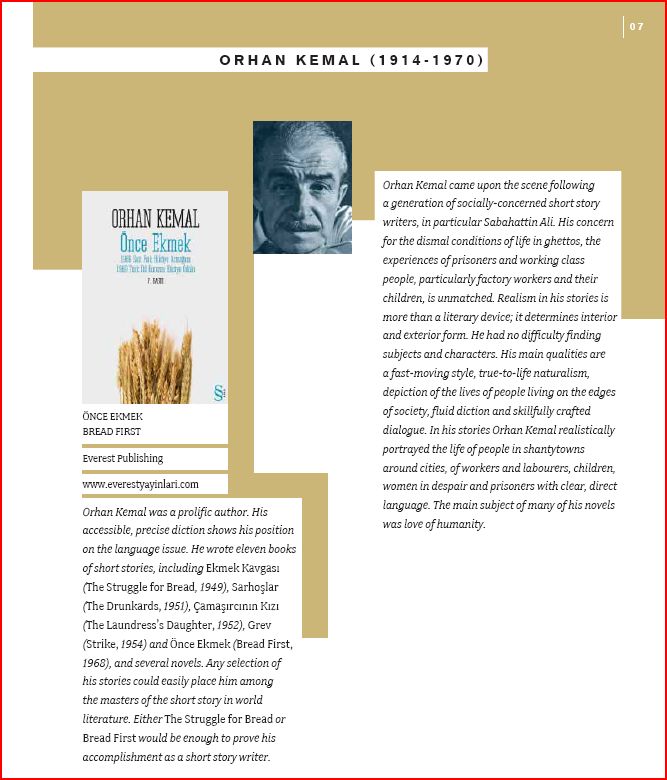Orhan Kemal was a prolific author. His accessible, precise
diction shows his position on the language issue. He wrote
eleven boohs of short stories, including Ekmek Kavgasi (The
Struggle for Bread, 1949), Sarhoslar (The Drunkards, 1951),
Camasircinin Kizi (The Laundress's Daughter, 1952), Grev
(Strike. 1954) and Once Ekmek (Bread First, 196S), and
several novels. Any selection of his stories could easily
place him among the masters of the short story in world
literature. Either The Struggle for Bread or Bread First
would be enough to prove his accomplishment as a short story
writer.

Orhan Kemal came upon the scene following a generation of
socially-concerned short story writers, in particular
Sabahattin ALI. His concern for the dismal conditions of
life in ghettos, the experiences of prisoners and working
class people, particularly factory workers and their
children, is unmatched. Realism in his stories is more than
a literary device; it determines interior --and exterior
form. He had no difficulty finding subjects and characters.
His main qualities are a fast-moving style, true-to-life
naturalism, depiction of the lives of people living on the
edges of society, fluid diction and skillfully crafted
dialogue. In his stories Orhan Kemal realistically portrayed
the life of people in shantytowns around cities, of workers
and labourers, children, women in despair and prisoners with
clear, direct language. The main subject of many of his
novels was love of humanity. |